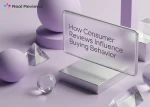
Can You Spot a Fake Review? Tips for Consumers in the AI Era
Researchers use AI to peer review scientific articles. But LLMs don’t just affect scientific breakthroughs; now they also ruin online shopping. We’ve only just gotten used to fake reviews and learned that stars and ratings can be doctored when AI has once again made customers’ lives harder. Now, we have to learn to recognize AI-generated feedback, or fake marketing and scammers will win once more.
In this post, we’ll explore the scope of the issue, highlight the major red flags, and share the most effective consumer tips of 2025 to teach you to recognize AI-generated reviews.
Why Fake Reviews Are a Real Problem
Nine out of ten people admit that reviews influence their decision-making even more than the product description or price. And marketers know it. That’s why the past decades have seen the rise of fake review brokers. They’d flood e-commerce platforms with fake, though human-written reviews (either positive or negative) to influence customer behaviour. Amazon even tried to sue over a thousand people posting positive reviews for cash.
The use of generative AI in ecommerce made the task even easier. Instead of paying copywriters to create fake reviews, marketers and salespeople can now generate them by the thousand (almost) for free.
In the end, this avalanche of fake reviews makes them worthless. Customer trust erodes, and people stop believing real user feedback, which gets lost among dozens of AI-generated posts. Companies lose credibility, sales plummet, and review brokers go out of business. So do your favorite brands. And we, as customers, are left with fewer options, poor quality, and no one to complain to. It’s a vicious cycle that should have never started, but the temptation was too much to resist.
Common Red Flags: Fake Review Detection Methods
Don’t be upset if you cannot tell human reviews from AI-generated text. Most people can’t. That’s why researchers are developing methodologies, deep learning algorithms, and new fake review detection methods to deal with the issue. It’s a battle of AI vs. AI.
So what can we do while we wait to see which model wins? We try our best. Even if generated content becomes more human-like every day, fake AI-generated reviews have a few things in common:
- They repeat the same generic info many times, using more words than necessary. Wordiness is common among LLMs and fake reviewers, since they need to hit the word or character count requirement, but don’t have enough info to go on. That’s why fake reviews often fall back on flowery language, cliches, and introductory phrases. “To be honest, I didn’t expect to write this review” is ten words no one who doesn’t get paid would write.
- The review is too negative or too positive to be true. People don’t generally say things like “I had the worst/best sleep of my night on this pillow”, at least without adding specific qualifiers, explaining what made the experience so bad (or good). For example, a genuine review could say things like “It stayed cool throughout the night, so I didn't have to flip it every half an hour, like I normally do”.
- The writing is too clean and proper. No dropped subjects, no split infinitives or dangling prepositions. No typos. Have you ever seen a review without at least one of these? AI models are trained on quality content, so their writing style is always grammatically correct and free of typos.
- The brand and product names come up too often. It’s especially common with search engine optimized (SEO) posts. They overuse keywords to make Google notice the reviews, but it usually looks weird for regular customers. Most genuine reviews won’t ever mention the product name, because they expect others to know what they are talking about. So, if you see something like “I love a cup of [Brand] coffee in the morning. [Brand] knows what they are doing with coffee, and I like the [Brand] packaging”, it’s likely fake.
The most effective trick for how to spot a fake review is to think back to the reviews you write. Most people don’t leave reviews if they are (mostly) happy with the products or services. When they take the time to post, it’s usually because they are mad and want to rant while warning other customers and damaging the offending company’s business. Of course, it doesn’t mean only positive reviews can be fake while all negative ones are real. It means you should ask yourself whether the post looks like it was written by an actual person using the product.
Are AI-Generated Reviews Fooling You? - Review Manipulation in the Wild
According to Yale researchers, most people cannot distinguish between AI and human-written reviews. As LLMs become more advanced and complex, and prompts evolve, telling the difference at a glance gets harder. Besides, more people rely on virtual assistants to clean up their writing. Just like you would run your work email through a Copilot, Gemini, or ChatGPT to make it sound more professional and clean up your typos, people use them to improve their writing in reviews.
That’s why it’s so important to be aware of the latest AI trends in doctored reviews and not blindly rely on 5-star ratings and 100% positive reviews. Your digital literacy skills must evolve alongside technological advances, or you might become a victim of false advertising and fake reviews.
Quick Checklist for Detecting Fake Online Reviews
There are lots of differences between real vs fake reviews. Even if you can’t be 100% sure the post is AI-generated, there are certain signs a genuine review should have.
If a review checks most of these boxes, it’s likely genuine:
- The review comes from someone with a verified purchase.
- The poster has a well-established profile with more than one review.
- The reviewer's username is not a series of random letters and numbers.
- The review tells a use story with specific cases and details.
- There are relatable reasons why the review is positive or negative.
- The post’s language and tone are consistent, without weird slips into jargon or formal tone.
- The review is not just a creative retelling of the marketing materials.
- There is no obvious promotion of other brands or products.
These tips should help you in detecting fake online reviews, whether they are human or AI-generated, so keep this checklist at hand.
How RealReviews Helps Users Detect the Truth
At RealReviews, we deliver on our promise of 100% genuine reviews. We use a multi-pronged approach to prevent, detect, and eliminate fake, doctored, and AI-generated posts. Our most effective fake review detection methods include:
- Order ID verification. Our review form has an optional field for customer order ID. Although it’s not obligatory, adding it boosts the review’s credibility and minimizes the risk of review manipulation.
- Automatic and manual moderation. We run a sophisticated algorithm to catch suspicious reviews that raise red flags in our system. Besides, our team checks reviews manually. This process takes longer, but it ensures only genuine feedback is published on RealReviews.
- Community reporting. No one is perfect, so a few fake reviews can slip past our rigorous moderation process. But our members have the option to flag suspicious posts and report them for additional review. We’ll suspend such reviews and only restore them if our additional checks prove the posts are genuine.
Stay Critical And Spot the Truth
So, can you trust online reviews, or should you ignore the feedback section? It’s up to you to decide. Just because shady businesses resort to AI to flood the feeds with glowing fake reviews doesn’t mean you can’t find genuine and helpful consumer review posts from real people. To make the task easier, look for independent feedback platforms like RealReviews and use our tips to tell the difference between fakes and the real deal.
FAQ
How many reviews are AI-generated?
On average, from 14% to 19% of online reviews are fake and/or AI-generated. But the number can be higher for recent releases. If the product has hundreds of positive reviews minutes after launch, they are likely generated.
Can you spot AI-generated reviews?
It’s hard, but possible. AI-generated text is either too emotional or too bland, uses too many words to say simple things, and often repeats the same sentiment two or more times. Overuse of the product or brand name is also common, and so is weird word choice and standard sentence structure.
Can AI detectors spot generated reviews?
Most detectors promise 100% accuracy, but that’s just a marketing trick. They use metrics like burstiness and perplexity to highlight text that’s potentially generated, but that is not the most accurate way to identify AI-generated text. Besides, AI detectors struggle with short texts, which is often the case with reviews.
Are AI-generated reviews legal?
No, they aren’t. According to the FTC, AI-generated reviews are fake (because an AI has no experience using the product or service). Since 2024, creating and publishing fake reviews is punishable by law in the US.
Can AI spot generated fake reviews?
Yes. Specialized neural networks trained to differentiate between real and fake reviews can also tell if they are AI-generated. Many businesses, including RealReviews, are rolling out tools to spot and remove AI-generated posts to preserve customer trust.




